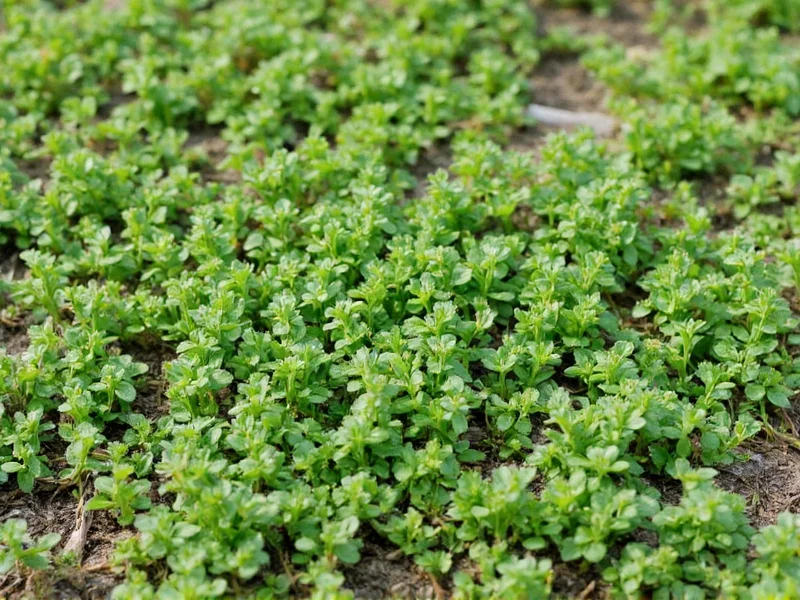For gardeners seeking a versatile, low-maintenance ground cover, creeping thyme delivers exceptional performance across multiple applications. This resilient herb spreads gradually to form a living carpet that withstands light foot traffic while releasing a pleasant aroma when brushed against. Unlike upright thyme varieties grown primarily for culinary use, creeping thyme's horizontal growth habit makes it perfect for filling spaces between stepping stones, stabilizing slopes, or creating fragrant borders in rock gardens.
Understanding Creeping Thyme Characteristics
Creeping thyme distinguishes itself from other thyme species through its prostrate growth pattern, typically reaching only 2-3 inches in height while spreading 12-18 inches wide. The tiny, oval leaves grow densely along woody stems, creating a textured surface that remains green throughout the growing season. In early summer, the plant produces clusters of small flowers that range from pale pink to deep purple depending on the variety, providing essential nectar for bees and other beneficial insects.
Growing Conditions for Optimal Performance
Successful cultivation of creeping thyme depends on replicating its native Mediterranean habitat. This plant requires:
| Requirement | Ideal Conditions | Tolerance Range |
|---|---|---|
| Sun Exposure | Full sun (6+ hours daily) | Partial shade (may reduce flowering) |
| Soil Type | Well-draining sandy or gravelly soil | Poor, rocky soils (avoids clay-heavy soils) |
| pH Level | 6.0-8.0 (slightly acidic to alkaline) | 5.5-8.5 (moderate tolerance) |
| Water Needs | Drought-tolerant once established | Minimal watering (overwatering causes root rot) |
When considering how to grow creeping thyme successfully, soil drainage proves most critical. Amend heavy clay soils with coarse sand and organic matter to improve drainage before planting. The best soil for creeping thyme mimics rocky Mediterranean hillsides where water drains quickly after rainfall.
Planting and Propagation Methods
Establish creeping thyme in your garden through several reliable methods:
- Division: Split mature plants in early spring or fall, ensuring each section has roots and shoots
- Stem Cuttings: Take 3-4 inch cuttings in late spring, remove lower leaves, and root in sandy soil
- Seeds: Sow directly after last frost (germination takes 14-28 days with consistent moisture)
- Transplanting: Space plants 6-12 inches apart depending on desired coverage speed
For those wondering when to plant creeping thyme, aim for early spring after the last frost or early fall to allow root establishment before extreme temperatures. The creeping thyme planting guide recommends avoiding summer planting unless providing consistent shade and moisture during establishment.
Care and Maintenance Requirements
Once established, creeping thyme care instructions become remarkably simple. This low-water plant requires minimal intervention:
- Watering: Provide deep watering only during extended droughts (typically 1 inch every 2-3 weeks)
- Fertilizing: Avoid rich fertilizers that promote leggy growth; occasional compost application suffices
- Pruning: Trim back one-third of growth in early spring to maintain density and prevent woody centers
- Winter Care: Most varieties withstand freezing temperatures; avoid mulching which can cause rot
Understanding creeping thyme watering requirements prevents the most common cultivation mistake—overwatering. During establishment, keep soil slightly moist but never saturated. After six weeks, reduce watering frequency significantly. For creeping thyme winter care, resist the urge to cover plants, as snow provides natural insulation while excess mulch traps moisture against stems.
Versatile Applications in Garden Design
The uses for creeping thyme in garden landscapes extend beyond simple ground cover. Creative applications include:
- Filling gaps between stepping stones or patio pavers
- Stabilizing erosion-prone slopes and embankments
- Creating living borders around garden beds
- Planting in container gardens for spillover effect
- Replacing traditional lawn in low-traffic areas
Many gardeners specifically select creeping thyme as ground cover because it tolerates light foot traffic while releasing a pleasant herbal fragrance. Unlike traditional turf grass, creeping thyme as ground cover requires no mowing and minimal maintenance once established. The plant's dense growth habit naturally suppresses weeds while attracting beneficial pollinators with its nectar-rich flowers.
Popular Varieties for Different Applications
Several creeping thyme varieties offer unique characteristics for specific garden needs:
- White creeping thyme (Thymus serpyllum albus): Produces delicate white flowers, ideal for brightening shaded areas
- Elfin creeping thyme: Forms ultra-dense mats with tiny leaves, perfect between stepping stones
- Lemon creeping thyme: Features citrus-scented foliage that repels mosquitoes while attracting bees
- Red creeping thyme: Displays vibrant magenta flowers that create striking visual impact
- Doone Valley creeping thyme: Variegated leaves with yellow margins provide year-round interest
When selecting varieties, consider whether you prioritize flower color, fragrance, or growth habit. The best creeping thyme varieties for walkways include Elfin and Red creeping thyme due to their exceptional tolerance of light foot traffic.
Common Challenges and Solutions
While remarkably resilient, creeping thyme occasionally faces these issues:
- Root rot: Caused by poor drainage or overwatering; improve soil structure and reduce watering
- Fungal diseases: Appears as white powdery mildew in humid conditions; increase air circulation
- Winter dieback: Occurs with excessive moisture; avoid fall fertilization that promotes tender growth
- Slow establishment: Patience required; may take 2-3 seasons to form dense mat
Gardeners often ask does creeping thyme attract bees? Absolutely—the plant's nectar-rich flowers prove highly attractive to honeybees, bumblebees, and native pollinators, making it an excellent addition to pollinator-friendly gardens. However, this characteristic means avoiding pesticide applications during flowering periods.
Harvesting and Culinary Applications
Though primarily grown as ornamental ground cover, creeping thyme offers culinary value. Harvest stems in morning after dew evaporates but before sun becomes intense. Strip leaves from woody stems and use fresh or dried. The flavor profile differs from common garden thyme (Thymus vulgaris), offering more subtle, earthy notes suitable for:
- Infusing vinegars and oils
- Garnishing roasted vegetables
- Adding to herb blends for poultry dishes
- Creating aromatic teas
For maximum flavor, harvest just before flowering when essential oil concentration peaks. Properly dried creeping thyme retains its fragrance for up to one year when stored in airtight containers away from light.











 浙公网安备
33010002000092号
浙公网安备
33010002000092号 浙B2-20120091-4
浙B2-20120091-4